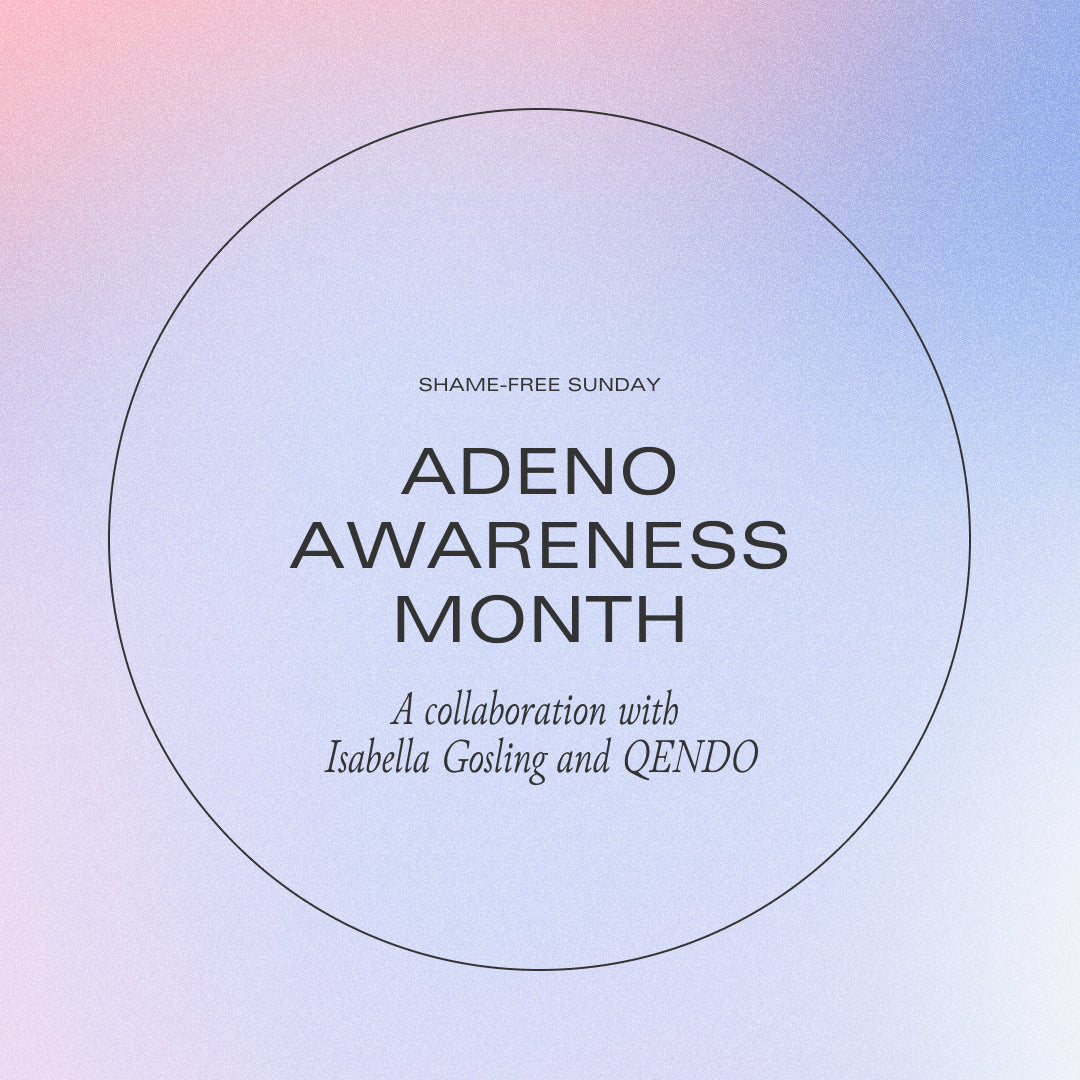After the 12th time typing out adenomyosis while writing this piece I thought for sure there was something seriously wrong with my spelling because, for the 12th time, it had a red underline underneath it. Upon further investigation, I realised that Google and most computer dictionaries don't even recognise it as a word because it is simply that unknown...! Why? Unfortunately, people who have periods are taught that bleeding, pain and discomfort are just par for the course and that there's little or nothing to be done about negative symptoms. What's important to recognise is that suffering is not normal and should never be something to simply grin and bear.
While adenomyosis, like many aspects of reproductive health, is still widely understudied and misunderstood, arming yourself with a deeper understanding of your own biology can be an empowering tool to becoming a better advocate for your overall health, wellness.
flossy: What is adenomyosis?
Isabella: adenomyosis is a disease where the endometrium grows into the muscle of the uterus (myometrium). The person experiencing this condition suffers numerous microscopic bleeds in the muscle, during the menstrual phase of their cycle.
flossy: How is adenomyosis different from endometriosis?
Isabella: endometriosis is where tissue similar to that of the lining of the uterus (the endometrium) implants and grows in other places, usually within the pelvic area, however we know endo has been found on every organ now, and is not just a gynaecological condition, but a whole body disease.
adenomyosis is where the lining of the uterus (the endometrium) grows into the muscle of the uterus (the myometrium). Each month or when a person experiences a menstrual bleed, they also then experience numerous microscopic bleeds into the muscle. Adeno can be as painful, if not more painful than endo.
The symptoms of endo are similar to adeno, however in addition to heavy, painful periods, nausea, painful intercourse, pain before or during bowel motions, pelvic pain and cramping, people with adenomyosis also often experience referred pain down their lower back and through their legs, as well as fatigue.
It is common for people with endometriosis to also have adenomyosis as well. If you’re still experiencing pain and symptoms despite undergoing excision surgery with an endometriosis specialist, adenomyosis should also be investigated. Alternatively, some people don’t have any endometriosis and just suffer from adenomyosis.
flossy: How do you get tested or diagnosed with adenomyosis?
Isabella: You can’t get ‘tested’ for adeno, however, it can be diagnosed through signs that characteristically suggest adenomyosis. The only way to definitively diagnose it is through a hysterectomy and histology of the tissue in your uterus.
Characteristically during laparoscopic surgery, surgeons are looking for a soft, bulky shape, small bumps or subtle bumps or tubal thickening on the Fallopian tubes.
MRI can be used when done by an experienced clinician, and there is evidence that the junctional zone (junction between the uterine lining and muscle of the uterus) is greater than more than 12mm in thickness, suggestive diagnoses are when the thickness is between 5-12mm combined with laparoscopic findings.
Alternatively, ultrasound can also be used and indicates increased blood flow or vascularity to the uterus, loss of clarity between lining and muscle of the uterus.
flossy: What resources/tools do you find most helpful for people who experience adenomyosis?
Isabella: A TENS machine can be beneficial for alleviating the lower back pain and referred leg pain that can occur from adeno. This can assist with mild to moderate pain and interrupt the signals the nerves send to the brain saying there’s pain.
Additionally, gentle stretching can assist in releasing the muscles that can become incredibly tight from cramping and bracing. Working with a pelvic physio can be beneficial here, as they can also recommend tools such as dilators or wands for internal release as well.
flossy: What else do you want people to know when it comes to adenomyosis?
Isabella: Despite people thinking adenomyosis only affects those who are 30 or older, young people and teenagers can also have adeno. The thought that only older people could have adeno was due to it only being diagnosed post-hysterectomy, however thanks to advances in research and diagnosis, it has been found in people as young as 13.



